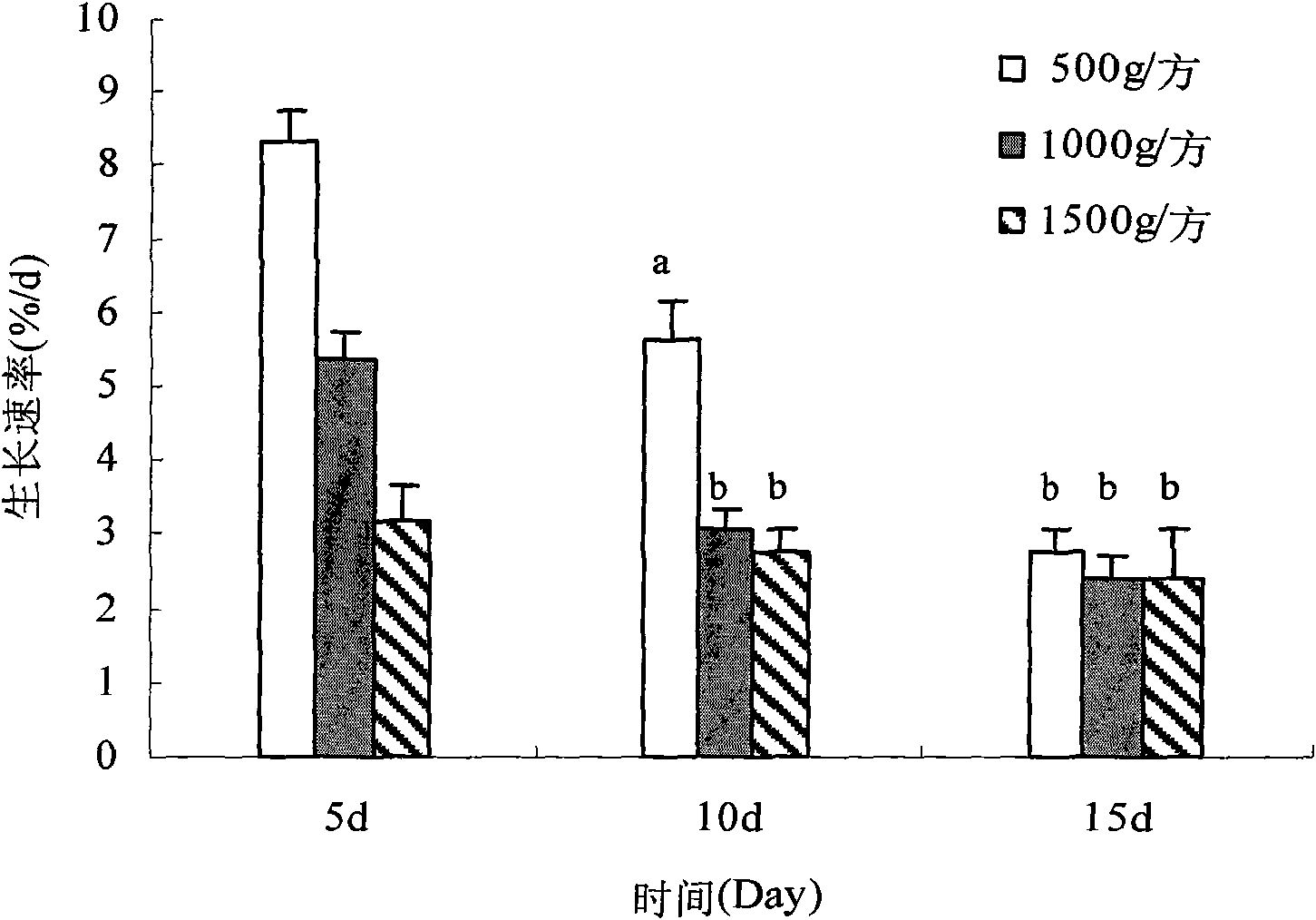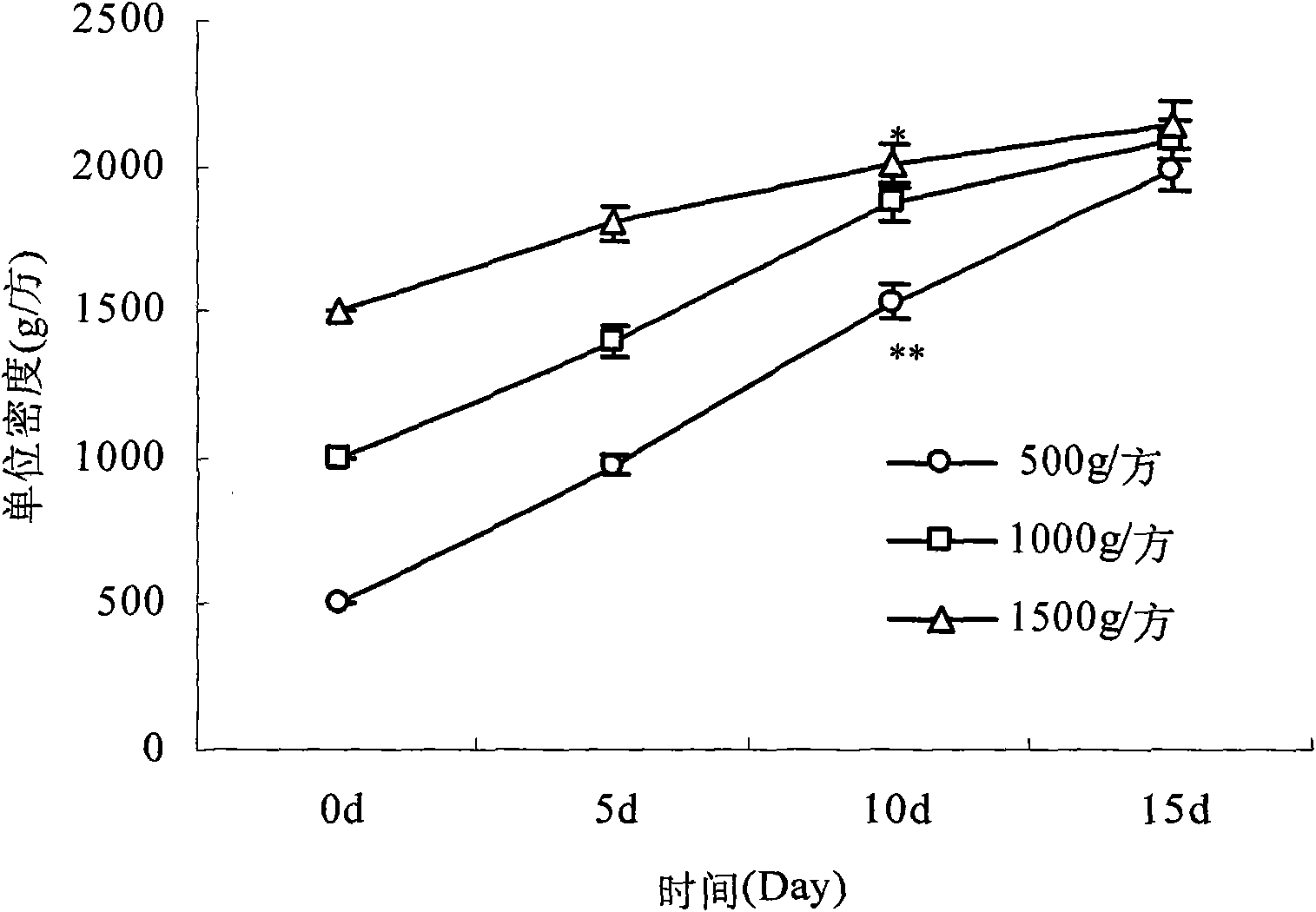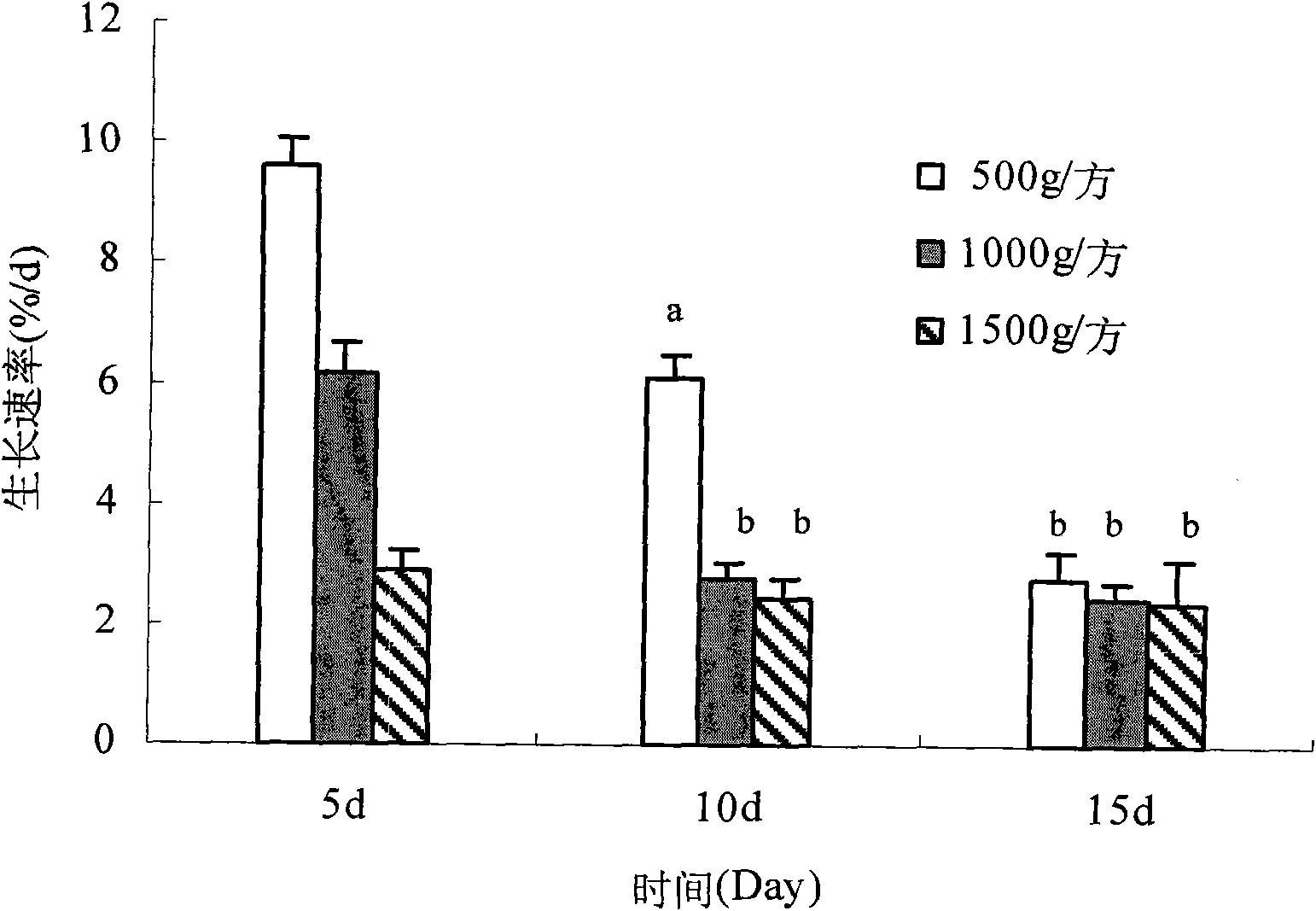Ecological breeding method for sea horses
A technology for ecological breeding and seahorses, applied in botany equipment and methods, fish farming, seaweed cultivation, etc., can solve the problems of low efficiency, low survival rate of artificially cultured seahorses, low stocking density, etc., and achieve low cost and broaden protection The way, the large effect of breeding individuals
- Summary
- Abstract
- Description
- Claims
- Application Information
AI Technical Summary
Problems solved by technology
Method used
Image
Examples
Embodiment 1
[0031] This embodiment is the selection of macroalgae and its growth condition test.
[0032] According to experiments, Gracilaria lemaneiformis, Gracilaria chrysanthemum (G.lichevoides) and Gracilaria spp. (G.tenuistipitata v.liui Zhang et Xia) were treated under light intensity of 20~300μE·m-2·s- 1. There are growth phenomena in the range of temperature 5~24.5℃, 12~36℃, 8~32℃ and salinity 5~40‰. However, there are certain differences in the optimal growth and suitable growth factor range of each algae strain. When these factors are not suitable, the growth of algae will be restricted, resulting in the reduction of its water purification function. The range between the highest and lowest tolerable values of these factors is the tolerance limit of the seaweed. The tolerance limit of different seaweeds is different. The suitable growth and optimum growth conditions and tolerance of several seaweeds tested As in Table 1.
[0033] Table 1 Comparison of suitable and optimal gr...
Embodiment 2
[0037] Determination of the effective density range of macroalgae to regulate water quality.
[0038] The growth of algae and the purification effect on water quality in different stocking densities of Gracilaria chrysanthemum and Asparagus were tested. Under the condition of nutrient enrichment, the growth rate of Gracilaria chrysanthemum with different stocking densities was different. In the first 5 days, the low density group (500g / m 3 ) is 8.32% / d, medium density group (1000g / m 3 ) is 5.36% / d, high density group (1500g / m 3 ) was 3.17% / d; with the increase of algae density in the system, the growth rate slowed down. On the 10th day, the growth rate of seaweed in the middle and high density groups was not significantly different (P>0.05), and on the 15th day, the growth rate of seaweed among the treatments was similar (P>0.05). At this time, the density of seaweed in each pond is also similar, which is 2000-2200g / m 3 between (see figure 1 ). After harvesting, the dens...
Embodiment 3
[0043] The cultivation of basic bait.
[0044] In the hippocampus breeding ponds, fermented chicken manure (i.e., add water to ferment the reserved chicken manure to make it mature, and apply it one week before stocking larvae hippocampus), the dosage is 30-50g / m 3 ; or cast urea, the dosage is 0.5 ~ 1g / m 3 . When the weather is fine, the color of the pool water gradually changes within 2 to 3 days. image 3 The concentration of chlorophyll a can reflect the increase of the abundance of phytoplankton; then the density of rotifers began to increase, and reached the highest peak on the 5th to 7th day, and then decreased slightly and tended to be relatively stable; the abundance of small crustaceans such as copepods in It began to increase gradually on the 5th day and was relatively stable after the 9th day.
PUM
| Property | Measurement | Unit |
|---|---|---|
| Density | aaaaa | aaaaa |
| Bottom area | aaaaa | aaaaa |
Abstract
Description
Claims
Application Information
 Login to View More
Login to View More - R&D
- Intellectual Property
- Life Sciences
- Materials
- Tech Scout
- Unparalleled Data Quality
- Higher Quality Content
- 60% Fewer Hallucinations
Browse by: Latest US Patents, China's latest patents, Technical Efficacy Thesaurus, Application Domain, Technology Topic, Popular Technical Reports.
© 2025 PatSnap. All rights reserved.Legal|Privacy policy|Modern Slavery Act Transparency Statement|Sitemap|About US| Contact US: help@patsnap.com



